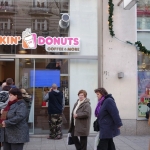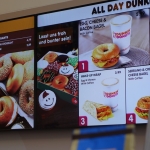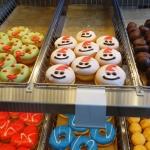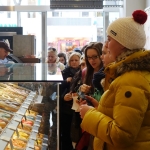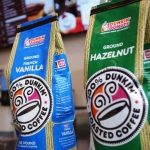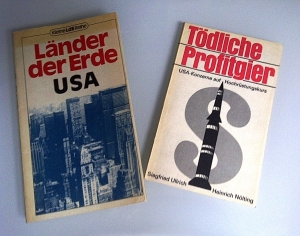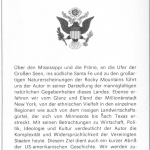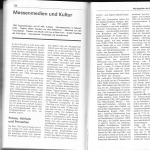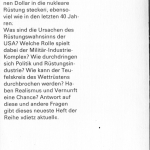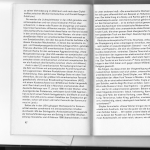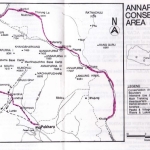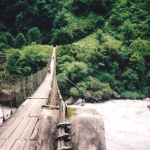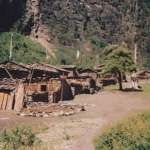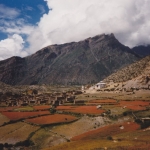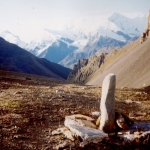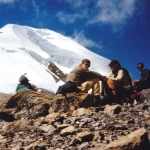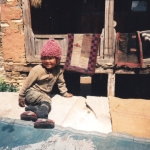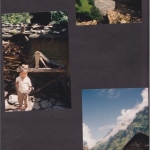“To write fiction, as I do, is to lie in the idiom of truth. To lie in a language not truly my own is to put an extra fork in my tongue. To be a spy is also a fork matter. It means trying to be the virtuoso of a daily duality.”
– Austrian born, American writer, Frederic Morton
A couple weeks ago at a writer’s conference, I ended up having lunch together with a British author. Halfway through the Quattro Stagioni, I mentioned that I live in Vienna. His eyes lit up and it wasn’t from the vino da tavola rosso (well maybe that too). Ahh, spy capital of the world.
He then confessed that his current book project concerns the real life tale of a former spy. From there we talked non-stop. Intriguing tales of the world of espionage got us so carried away that he almost ran late for an afternoon panel discussion featuring him as one of the special guests.

Key Logging – no doubt an effective spying tool
If the Vienna Tourist Board had an ad to attract spies to the city, I am sure it would read something like this:
If you’re a spy, Vienna is the place to go.
A Russian spy? Serve yourself up some Austrian Schnapps and reminisce with your comrades about the good old days after WWII. With your ten additional years in the city, I am sure you grew well acquainted with all we have to offer and who wouldn’t want to be posted at the station rumored to be the strongest intelligence headquarters outside the Soviet Bloc?
And the rest of you? Vienna welcomes all spies, all languages, all nationalities — that’s just how we are. Multi-kulti. That’s us. And we’re sure you’ll enjoy your clandestine existence in a place consistently voted world’s number one most livable city. We’ve got international stores and restaurants (amazing steaks and even a doughnut shop), top quality English-language international schools, acres of parks, annual balls hosted at the imperial palace and cultural events to keep you busy every hour of every day of the week.
Location, location, location
There’s that too. A great infrastructure with international flight and train connections, located in the heart of central Europe with easy access north, south, east or west. Bratislava? Just a 1.5 hour hydrofoil ride away. Budapest? In less than three hours and no transfers, you’re there by train. And trains leave every two hours. Prague? As of December, in just 4 hours and 10 minutes you’re there. Again, trains leaving every two hours. Munich? about 4 hours by train. Venice? Less than 6 hours by car. Zagreb? Less than 4 hours by car. Belgrade? 6.5 hours by car. Flights? Moscow: 2 hours, 40 minutes; London: 2 hours, 21 minutes, Ankara: 2 hours, 32 minutes; Bagdad: 4 hours. You get the picture.
And let’s not forget highly trained and qualified medical personnel, interpreters and translators, all at your finger tips. But if we’re honest, you’ll be moving heaven and earth to prolong your Vienna assignment because of the Grüner Veltliner, Ottakringers, Melanges and Milkas. What more could a 007 want? O.K. Maybe a martini shaken, not stirred. Vienna got that too.
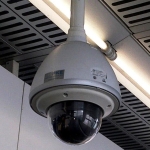
Nowadays everyone is spy-worthy – a camera in the Vienna subway
And the Austrians? As long as you agree not to spy on them personally because that would be a big no-no – then hey – alles in Ordnung. Foreign espionage activities are not illegal in Austria, unless they are directed against Austria. Alles klar, Herr Leamas?
But don’t let that deter you from relocating. There’s plenty of spy-worthy targets here to keep even the most ambitious spies satisfied.
As a United Nation headquarters, Vienna is home to many international organizations such as the Organization for Security and Cooperation in Europe (OSCE), the Organization of Petroleum Exporting Countries (OPEC), the International Atomic Energy Agency (IAEA) and the UN Office for Drugs and Crime (UNODC). Of the 17,000 or so diplomats who reside here, it’s estimated that about half have connections to intelligence agencies which would make it the city with the highest density of foreign operatives in the world.
But every rose has its thorns. It’s like the house guest who starts to feel a little too much at home and starts to take advantage of the situation. Because spies oftentimes feel comfortable here, Vienna is also chosen as an ideal location for covert actions –like kidnappings, dead drops, high level international spy damage control negotiations and prison exchanges.
In July 2010, for example, Vienna International Airport was the chosen tarmac for Russians and Americans to do a little change your partner number and swap 14 agents. Eleven Russian agents – including the stunning femme fatale Russian spy, Anna Chapman , were rounded up by US authorities in Virginia, New York, Massachusetts, New Jersey, Washington and Cyprus a month before and then exchanged for three individuals accused of spying for the US and who Russian authorities had held in custody for over 6 years.
But in general, Austria’s spy guests tend to be well-behaved and the Viennese, for their part, have found their place in the spy world beneficial. After all, it was the Armenian spy Johannes Diodato who, in addition to using his connections with the Viennese Imperial Court to send information to his home country, used information from his home country to open Vienna’s first ever coffeehouse. And all Viennese love a good coffeehouse.
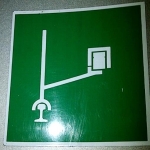
Sticker in Vienna subway indicating presence of camera
“Vienna has long been a center of accomplished deception. For centuries, the Hapsburg capital was above all a courtier town whose citizens were trained rigorously to hide purpose under manner… Even today, the conjuring of otherness, the crafting of illusion, is important, not just for practical advantage but as a dynamic of Viennese culture. This genius for artifice underlies Vienna’s affinity for art. It shapes Vienna’s flourishes: the stylishly indirect speech, the use of titles, the adroit courtesy, the instinctive use of charm as strategy..[and according to Karl Kraus, Vienna’s pre-eminent satirist, in Vienna] ‘Politics is what one does in order to hide what one is.’” Frederic Morton

More about Johannes Diodato:
Vienna City Website: “History of Viennese coffee house culture”
In Vienna’s 4th district, there is a Johannes-Diodato-Park which I think is dedicated in honor of his brewing beans rather than intrigue.
Spy books that take place in or pass through Vienna:
Another unconventional quasi-spy story is A Death In Vienna by Daniel Silva
Prelude to Terror by Helen MacInnes is spy story set in Vienna
John Le Carre: A Perfect Spy: Background of story at Wikipedia
Valerie Plame and Sarah Lovett: Blowback
National Public Radio, Inskeep, Steve and Pearl, Nancy, “Librarian’s Picks: The Best in Spy Fiction“, 2 February 2005
Morton, Frederic, “The Two Sides of Block, Vienna Spy Tale Fit for Austrian Capital” 9 Aug 1989, http://articles.philly.com/1989-08-09/news/26150203_1_felix-s-bloch-diplomat-vienna, accessed 11 October 2014
More Links with Vienna Spy Stories / News:
ABC News Report about Spy Swap in Vienna Vision Airlines Plane Sends 10 Russian Spies Home, July 9, 2010, Brian Ross and Megan Chuchmach
Vienna Review, “Spy vs. Spy: 20 years after the fall of the USSR, Vienna is still the espionage capital of Europe; A puzzling saga of Cold War proportion,” Rabel, Sarah, Rollwagen Joseph, Stadtlober, Hannah, 1 September 2010
The Telegraph, “Vienna named as Global Spying Hub in New Book,” McElroy, Damien, 31 July 2014
The New York Times, “US Weighs Dismissing Bloch but has an Evidence Problem,” Engelberg, Stephen, 30 September 1989
The Telegraph, “Five Unlikely Objects that could use in Espionage” 6 August 2014
Mental Floss, “World War I Centennial: Gay Spy Scandal Rocks Vienna,” Sass, Eric, 25 May 2013
RT, “NSA spies on OSCE HQ in Vienna – report,” 22 May 2014
Sun Sentinel, from NY Times, “Marine Gives Conflicting Accounts about Spy Case” 30 March 1987
The Local, Austria News in English, “Austria Investigates US Spy’s Local Links,” 13 July 2014
Press TV, “NSA spy center in Vienna snooping on citizens: Report” 13 October 2014
RiaNovosti, “Vienna Named International Spy Capital,” 1 August 2014
Two Articles with Interviews with Siegfried Beer who is works with the Austrian Center for Intelligence, Propaganda and Security Studies – articles downloaded from the ACIPSS website where more information is available for download. Beer_Profil_Artikel Kaffeehaus_July2012_Siegfried-Beer(1)
 Two Dunkin Donuts Vienna Locations:
Two Dunkin Donuts Vienna Locations:

